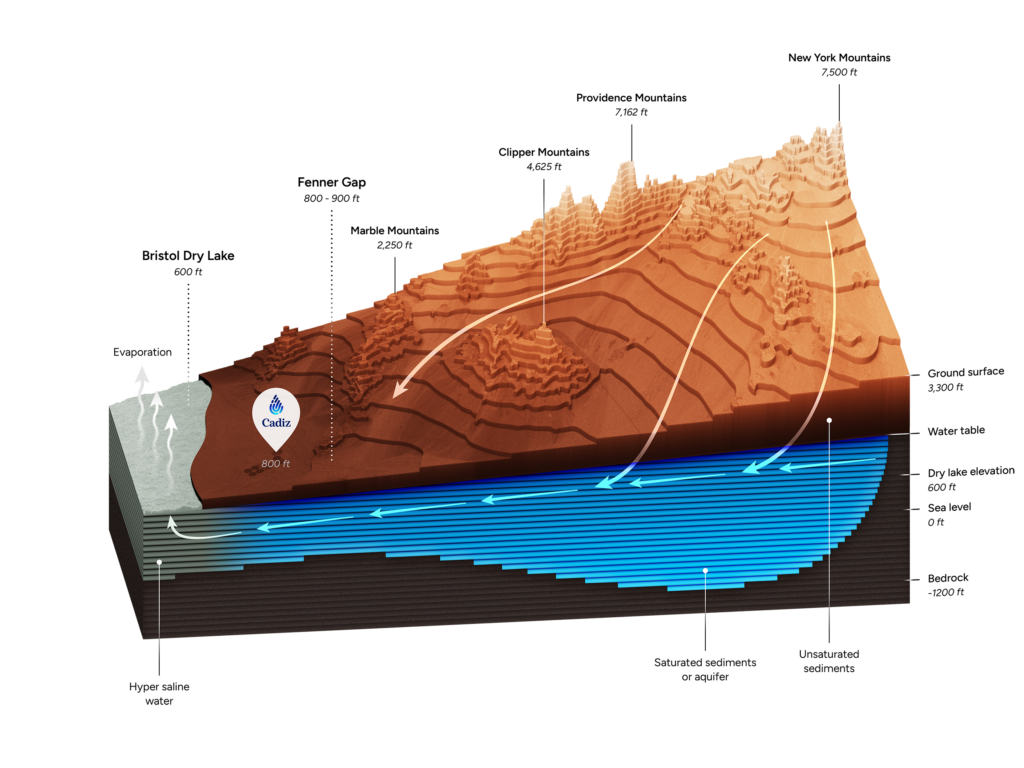Storage
Storage
Climate change is forcing agencies and community leaders to rethink their water infrastructure. That’s especially true with California’s extreme weather: years of “megadrought” followed by a wet winter of “atmospheric rivers.” Storing water underground is more important than ever.
A century ago, California built an extensive infrastructure of reservoirs and aqueducts – based on predictable mountain snowmelt. Excess in the occasional wet year was simply channeled to the sea to minimize flooding.
With the changing climate, California and other states need to capture that floodwater for use in increasingly dry years. Surface reservoirs and aqueducts do little to capture excess water from heavy precipitation, while losing much of their volume to evaporation.
Cadiz offers a new approach for the era of climate change: underground storage that saves excess water and withdraws it as needed during droughts.
How the Aquifer Works

Preventing Water from Going to Waste
Below ground in the Mojave Desert, Cadiz offers the largest groundwater bank in southern California. Its capacity of a million acre-feet equates to enough water supply for at least three million households.
Unlike surface reservoirs, our underground storage loses no water to evaporation — a growing problem across the state and beyond. The entire Colorado River Basin loses 1.5 million acre-feet annually, a tenth of its annual flow. The State Water Project loses another one million acre-feet. Even covering aqueducts with solar panels, if economical, would reduce that loss by just a small amount. By contrast, storing water underground saves 10-20% of the water compared to an open surface reservoir such as Lake Mead.
Learn more about our sustainable water supply
Learn more about Cadiz’s conveyance solutions here
The Promise of Conjunctive Use
Surface reservoirs aren’t enough to safeguard California’s water security in the age of climate change. We need “conjunctive use,” where groundwater storage banks supplement existing infrastructure with pipelines. That way the banks can hold the excess in wet years, and agencies can withdraw as needed in dry ones.